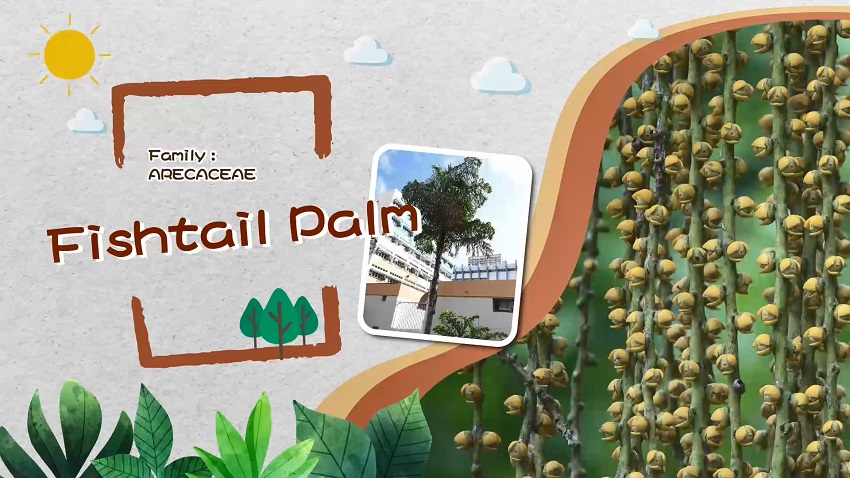| Growing habit |
Tree-like palm. |
| Height |
To 25 m. |
| Stems |
Solitary stem columnar, diameter to 50 cm, leaving conspicuous grey annular scars. |
| Leaves |
Bipinnate. Leaves large, to 4 m long, borne along upper half of stems. Primarily divided into 27 pairs of pendulous pinnae, which further divided into 12 to 27 pairs of secondary pinnae. Pinnae dark green, shaped like fish tail, drooping. The terminal secondary pinna large, cuneate, apex 2- to 3-lobed; lateral secondary pinnae smaller, rhombic, the outer margin straight, upper part of inner margin irregularly toothed. Sheaths with black fibres on the margin. |
| Flowers |
Monoecious, with male and female flowers on the same inflorescence. Flowers 3-fasciculate, with female flower in the centre. Inflorescences axillary, with many spike-like branches, large and drooping, to 3 m long. Petals of male flowers elliptic, yellow. Stamens many, around 100. |
| Fruits |
Globose, red, purplish red to purplish black when mature. Usually with 1 seed, rarely with 2 seeds. |
| Flowering period |
May to July in Hong Kong. |
| Fruiting period |
August to November in Hong Kong. |















